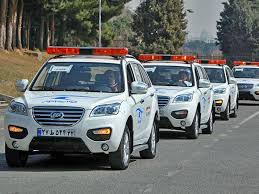Introduction
Vehicles play an integral role in modern society, facilitating transportation, commerce, and personal mobility. From ancient chariots to electric Vehicle rental Fuerteventura, the evolution of vehicles reflects technological advancements and changing societal needs. This article explores the various types of vehicles, their history, and emerging trends shaping the future of transportation.
Types of Vehicles
- Automobiles
- Cars: The most common form of personal transportation, cars come in various types including sedans, hatchbacks, SUVs, and coupes. They are primarily powered by internal combustion engines (ICE), though electric and hybrid vehicles are becoming increasingly popular.
- Motorcycles: Two-wheeled vehicles that offer a unique driving experience. They range from scooters to high-performance sports bikes.
- Commercial Vehicles
- Trucks: Essential for freight transportation, trucks vary from light-duty pickups to heavy-duty lorries designed for long-haul transportation.
- Vans: Often used for transporting goods or passengers, vans can be configured for various purposes, such as cargo transport or shuttle services.
- Public Transport Vehicles
- Buses: Used for mass transit in urban areas, buses come in various sizes and designs, including double-decker and articulated models.
- Trains: Rail transport includes passenger trains, freight trains, and high-speed rail systems, providing efficient long-distance travel.
- Specialized Vehicles
- Emergency Vehicles: Ambulances, fire trucks, and police cars are designed for rapid response and specialized functions.
- Construction Vehicles: These include bulldozers, cranes, and excavators, designed for specific tasks on construction sites.
- Alternative Vehicles
- Bicycles: An eco-friendly mode of transport, bicycles promote health and reduce traffic congestion.
- Electric and Hybrid Vehicles: As environmental concerns rise, electric vehicles (EVs) and hybrids have gained popularity, offering lower emissions and reduced fuel dependence.
History of Vehicles
- Prehistoric and Ancient Vehicles: The first vehicles were likely simple sleds and carts pulled by animals. The invention of the wheel around 3500 BC was a pivotal moment, leading to the development of chariots in ancient civilizations.
- The Industrial Revolution: The late 18th and early 19th centuries saw significant advancements, including the steam engine and the introduction of railways.
- The 20th Century: The invention of the automobile by Karl Benz in 1886 marked the beginning of personal vehicle ownership. Mass production techniques, pioneered by Henry Ford, made cars accessible to the general public.
- Late 20th to Early 21st Century: The focus shifted to safety, fuel efficiency, and emissions reduction, leading to the development of safety features and the rise of alternative fuel vehicles.
Emerging Trends in Vehicle Technology
- Electric and Autonomous Vehicles
- Electric Vehicles (EVs): With the increasing concern over climate change, EVs are becoming more mainstream. Governments worldwide are providing incentives to encourage their adoption.
- Autonomous Vehicles: Self-driving technology is rapidly developing, promising to revolutionize transportation by improving safety and efficiency.
- Connectivity and Smart Technology
- Telematics and IoT: Vehicles are increasingly equipped with connectivity features that enable real-time data exchange, improving navigation, maintenance, and safety.
- Infotainment Systems: Advanced systems provide entertainment, communication, and navigation, enhancing the driving experience.
- Sustainability Initiatives
- Biofuels and Alternative Energy: Research is ongoing into sustainable fuels that reduce reliance on fossil fuels and lower emissions.
- Shared Mobility: Car-sharing and ride-hailing services are changing ownership models, promoting efficient use of vehicles and reducing traffic congestion.
Conclusion
Vehicles have come a long way from simple animal-drawn carts to complex machines equipped with advanced technology. As we move forward, the automotive industry faces the challenges of sustainability, safety, and efficiency. Understanding the different types of vehicles, their history, and the latest trends can help consumers make informed choices and embrace the future of transportation. Whether through personal cars, public transport, or innovative new technologies, vehicles will continue to shape the way we live, work, and connect with one another.
